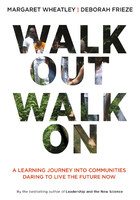
第6章
OUR INVITATION FOR HOW TO READ THIS BOOK
This looks like a book and reads like a book.
But it can be much more than that.
This book is an opportunity to go on a Learning Journey. In these pages, you'll meet people in seven different countries, all of them our friends and colleagues, who have taken on challenging problems that others have been unable to solve. They've discovered enduring solutions and created healthy and resilient communities by working together in new and different ways.
If this were an actual Learning Journey, we'd be traveling together to these communities. We'd get on a plane, propelled by curiosity and a desire to experience ways of thinking and living different from our own. We'd willingly step out of the familiar and discover people in other cultures and places who accomplish their work by relying on beliefs and assumptions quite different from the conventional wisdom.
On a Learning Journey, participants often experience a wide range of emotions: surprise, disbelief, excitement, doubt, joy, reassurance. These strong, contradictory feelings are likely to appear whenever we discover that seemingly unsolvable problems have solutions. All we have to do is change our minds! This is what a Learning Journey offers, even in book form—an opportunity to shake up our thinking, engender new insights, and strengthen our commitments.
We authors have each led several learning journeys. Because we've seen their transformative power, we challenged ourselves to re-create the experience of being in these different communities using only prose and photos. You'll be the judge of whether we succeeded. But it also depends on you. In every journey we've led, everyone has a different experience, even though we're in the same location, meeting the same people. We've learned that we can create the visits, but each participant creates his or her own journey.
For this book to succeed as your Learning Journey, we encourage you to think about how best to support yourself as a learner. What conditions need to be present for you to engage fully with the stories, to foster your learning, to reflect on what you just read? We provide the opportunities for immersion, observation, and reflection. But the learning is up to you.
TWO CHOICES FOR HOW TO READ THIS BOOK
A. You can read this as a Learning Journey, a provocation that invites you to examine your beliefs and assumptions about how change happens and what becomes possible when we fully engage our communities. If you choose to journey with us, start by reading Part I: Leaving Home.
B. You can read this as a conventional book. We suggest you dig in immediately and begin by reading the story of one community, whichever one attracts you most. However, we need to offer a word of caution. Each visit has been designed to create a sense of immersion—like drinking from a fire hose. This can be overwhelming, at times even disorienting. That's the nature of a Learning Journey—it creates moments when we're no longer sure about something. We authors like this, because we've seen that when certainty collapses, it's often replaced by curiosity. If you're reading through for content and not pausing for reflection at the end of each visit, you may find our approach disconcerting.
STRUCTURE OF THE CHAPTERS (VISITS)
Learning Journeys have four major components, which you'll find in each chapter:
1. Immersion. Each visit provides a direct experience inside these communities, through lively prose and many photos. We hope you feel immersed in the stories of these people and places.
2. Observation. There are moments when we, as hosts, observe and make visible contrasts between conventional assumptions and practices and those in use in this community. We also take time to explore the major issue this community has dealt with, providing more context. We feel these are core challenges that every community must eventually confront.
3. Other Examples. These communities aren't anomalies. In each chapter, we give you a glimpse of what's going on elsewhere, naming other communities and programs that rely on quite similar beliefs and practices to achieve remarkable outcomes.
4. Reflection. Each visit ends with a few short essays meant to stimulate your personal reflections. We've learned that it takes time to process any provocative experience, to notice our thoughts and reactions and what they might mean.
We welcome you to this journey!